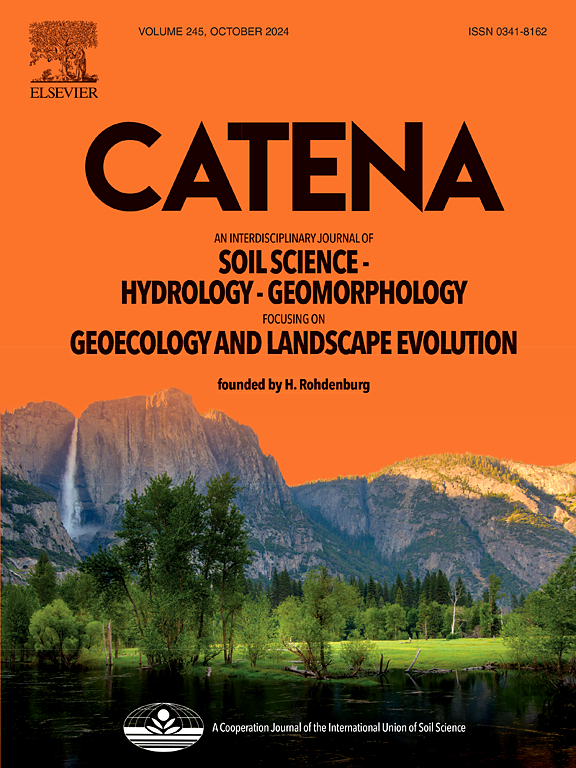Respiration rate of moss-dominated biocrusts and their relationships with temperature and moisture in a semiarid ecosystem
Yao, Xiaomeng , Xiao, Bo , Kidron, Giora J , Hu, Kelin
2019-12-01 null null 183(卷), null(期), (null页)
Biocrusts are widely distributed throughout the world in dryland ecosystems, but their respiration rate (R-s) and responses to soil temperature and mositure have not yet been fully investigated. In a semiarid region of the Loess Plateau in China, the R-s of moss-dominated biocrusts was continuously (104 days) measured in summer through an automated soil respiration system, and their relationships with soil temperature and moisture at 2, 5, and 10 cm depths were intensively analyzed. The results showed the biocrusts had 115% higher (t = - 3.82, P < 0.001) R-s during day and 44% higher (t = -10.22, P < 0.001) R-s during night as compared with the underlying soil; they averagely increased R-s by 81% (2.52 vs. 1.39 mu mol(-2)s(-1)) across day and night. More specifically, the R-s of biocrusts ranged from 0.33 to 6.33 mu mol m(-2)s(-1) in wet conditions (soil moisture >= 0.15 cm(3) cm(-3)) and 0.27 to 2.83 mu mol m(2)s(-1) in dry conditions (soil moisture = 0.05 cm(3)cm(-3)), with a daily mean of 2.11 mu mol m(-2)s(-1). Particularly, in wet conditions the R-s of biocrusts had positive responses to increasing temperature, and their relationship was well fitted with an exponential function (R-2 <= 0.44; P < 0.001), with a Q(10) value ranging between 1.73 and 2.08. Similarly, the R-s of biocrusts was positively correlated with soil moisture, but their relationship was not well fitted with the quadratic function (R-2 <= 0.22). A model based on the soil moisture and temperature at 2 cm depth performed much better (R-2 = 0.53; P < 0.001) with R-s than that based on the soil moisture and temperature at 5 or 10 cm depth or even air temperature. In conclusion, moss biocrusts made a significant contribution to soil respiration in semiarid ecosystem, firstly (and directly) due to the rich and diversified microbial communities in biocrust layer and secondly (and indirectly) due to the biocrust effects on soil temperature and moisture regimes. The temperature and moisture at 2 cm depth (biocrust layer) should be employed with a higher priority in simulating R-s of biocrusted surfaces, rather than the commonly used soil depth (5 cm) in estimating R-s of the ordinary soil without biocrusts.
相关推荐
- Litter covering decreases moss activity, mediating the relationships between moss biocrusts and shrub patches in semiarid dryland ecosystems [2019-12-01]
- Biocrusts intensify grassland evapotranspiration through increasing evaporation and reducing transpiration in a semi-arid ecosystem [2019-12-01]
- Cyanobacterial and moss biocrusts shape soil nematode community in dryland mountain ecosystems with increasing aridity [2019-12-01]
- Increasing effect of biocrusts on evaporation is evidenced by simulating evaporation and diffusion experiments and water stable isotope analysis [2019-12-01]
- Ecohydrological influences of biocrusts and their pathways in a desert steppe ecosystem [2019-12-01]



